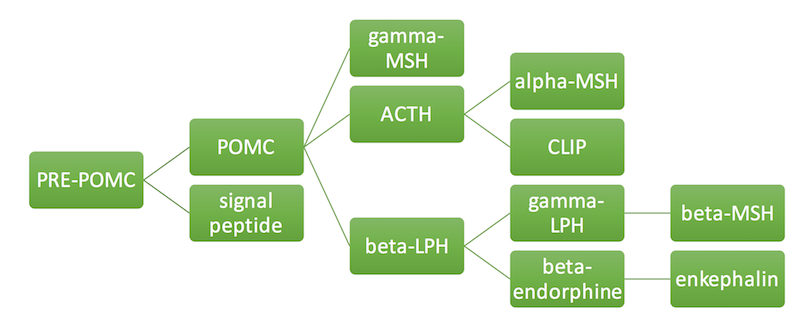|
Size: 3048
Comment:
|
Size: 3038
Comment:
|
| Deletions are marked like this. | Additions are marked like this. |
| Line 3: | Line 3: |
| Addiction is a condition that arises when a being consumes substances or engages in activities that can be pleasurable at first, but the prolonged ingestion or act of which becomes a necessity. It emerges by the search of the ‘euphoric’ feeling a substance or activity brings with it. This feeling is the cause of the increase of the level of the striatal '''dopamine''' neurotransmitter. Users may not be aware that their compulsive behaviour is out of control and also once a being is addicted an entirely separate set of events or stressors may sustain and maybe amplify the addiction. Addiction can eventually lead to abuse. When relating addiction to pain, it is actually the endorphins released in the system which aid the dopamine release and gets a being addicted, forming a dependency on their release. |
|
| Line 5: | Line 7: |
| = Introduction = Addiction is a condition that arises when a being consumes substances or engages in activities that can be pleasurable at first, but the prolonged ingestion or act of which becomes a necessity. It emerges by the search of the ‘euphoric’ feeling a substance or activity brings with it. This feeling is the cause of the increase of the level of the striatal '''dopamine''' neurotransmitter. Users may not be aware that their compulsive behaviour is out of control and also once a being is addicted an entirely separate set of events or stressors may sustain and maybe amplify the addiction. Addiction can eventually lead to abuse. When relating addiction to pain, it is actually the endorphins released in the system which aid the dopamine release and gets a being addicted, forming a dependency on their release. = Pain = |
== Pain == |
| Line 11: | Line 10: |
| == Pain management == | === Pain management === |
| Line 14: | Line 13: |
| === Natural pain management === | ==== Natural pain management ==== |
| Line 16: | Line 15: |
| ||<tablebgcolor="#eeeeee" tablestyle="float:center;font-size:0.85em;margin:0 0 0 0;"style="padding:0.5em; ;text-align:center"> {{attachment:Synthesis of beta-endorphins1.png|pop-up text}} <<BR>>'''Fig 1.'''<<BR>>''Synthesis of beta-endorphins'' || | ||<tablebgcolor="#eeeeee" tablestyle="float:center;font-size:0.85em;margin:0 0 0 0; "style="padding:0.5em; ;text-align:center"> {{attachment:Synthesis of beta-endorphins1.png|pop-up text}} <<BR>>'''Fig 1.'''<<BR>>''Synthesis of beta-endorphins'' || |
Physiology of pain addiction; behavioural effects
Addiction is a condition that arises when a being consumes substances or engages in activities that can be pleasurable at first, but the prolonged ingestion or act of which becomes a necessity. It emerges by the search of the ‘euphoric’ feeling a substance or activity brings with it. This feeling is the cause of the increase of the level of the striatal dopamine neurotransmitter. Users may not be aware that their compulsive behaviour is out of control and also once a being is addicted an entirely separate set of events or stressors may sustain and maybe amplify the addiction. Addiction can eventually lead to abuse. When relating addiction to pain, it is actually the endorphins released in the system which aid the dopamine release and gets a being addicted, forming a dependency on their release.
Pain
Pain is a feeling of discomfort, distress or even agony depending on how severe it is. It has been defined as a biopsychosocial phenomenon that includes sensory, emotional, cognitive, developmental, behavioral, spiritual, and cultural components. (Salsitz, 2015) It can be either acute or chronic. Both types can be intense but chronic is the type of pain that lasts much longer, while acute pain is short lived. Pain stimuli starts from an electrical impulse from sensory receptors of the skin - nociceptors - to the spinal chord, acting as a relay centre. The electrical impulse can be suppressed or enhanced before going to the brain. The brain then, produces several different neuroreceptors - such as glutamate - which then cause an impulse and reaches the thalamus and after the brain cortex.
Pain management
Pain management can be natural or artificial
Natural pain management
One of the main types of these endogenous opioids are beta endorphins. These are neuropeptides, which possess morphine like effects and are involved in the processes which bring happiness to a being - maybe even give a euphoric feeling. This is the part of the process which can get addicting. Physiological stressors such as pain, stimulate the synthesis of the the corticotroponin-releasing hormone (CRH) in the hypothalamus. This hormone is the one which triggers the anterior pituitary gland to synthesise the beta-endorphines. They are synthesised from their precursor protein proopiomelanocortin (POMC) along with other hormones such as the alpha-melanocyte stimulating hormone (MSH) and the adrenocorticotropin (ACTH). Beta-endorphines are also stored in the anterior pituitary. When there are enough beta-endorphines a negative feedback inhibits the further production of CRH.
|

